Address
304 North Cardinal
St. Dorchester Center, MA 02124
Work Hours
Monday to Friday: 7AM - 7PM
Weekend: 10AM - 5PM
Address
304 North Cardinal
St. Dorchester Center, MA 02124
Work Hours
Monday to Friday: 7AM - 7PM
Weekend: 10AM - 5PM
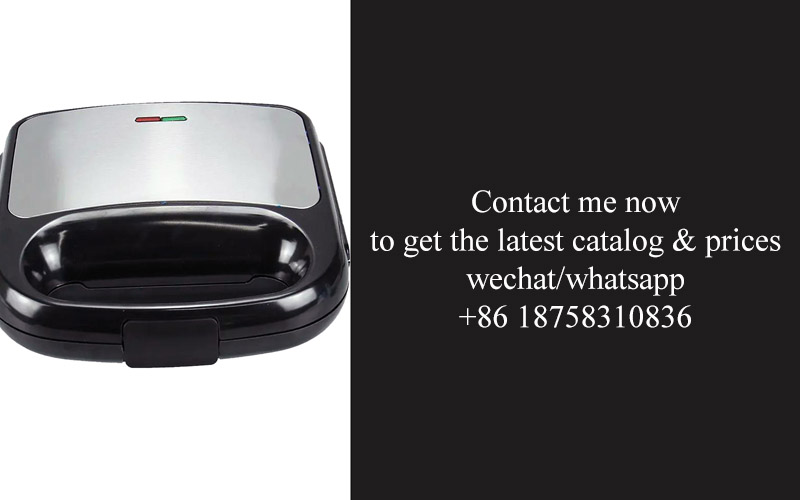
In the ever-evolving landscape of kitchen appliances, private label brands are making a significant splash. As consumers seek value and innovation, the packaging of these products plays a pivotal role in their appeal. Let’s delve into the intricate world of private label kitchen appliance packaging, exploring its impact on brand perception, consumer choices, and the exciting innovations shaping the future.
The retail landscape has been witnessing a significant shift, with private label kitchen appliances gaining momentum and capturing the attention of consumers. Once the domain of budget-conscious shoppers, these appliances are now making waves due to their innovative designs, competitive pricing, and the unique value they offer.
As consumers become more value-driven, private label brands are stepping up their game, offering a wide array of high-quality kitchen appliances. From sleek ovens to energy-efficient refrigerators, these products are not just comparable to their branded counterparts but often exceed expectations. The rise of private label kitchen appliances can be attributed to several key factors.
Firstly, the perception of private label products has evolved. Consumers are no longer viewing these items as mere substitutes but as viable alternatives that can deliver superior performance. This change in mindset is largely due to the rigorous quality control measures implemented by private label brands, ensuring that their products meet or exceed industry standards.
Secondly, the cost factor plays a pivotal role. Private label kitchen appliances are generally more affordable than name brands, making them an attractive option for budget-conscious shoppers. This affordability extends to both the initial purchase and the long-term costs of maintenance and energy consumption.
Moreover, the convenience of private label shopping cannot be overlooked. With the rise of online marketplaces, consumers can now easily compare products, read reviews, and make purchases without leaving their homes. This ease of access has significantly boosted the popularity of private label kitchen appliances.
Design and innovation are also driving the rise of private label kitchen appliances. Brands are investing heavily in research and development to create appliances that not only look stylish but also offer cutting-edge technology. Features like smart connectivity, energy-saving modes, and user-friendly interfaces are becoming standard in many private label products.
Another contributing factor is the increasing awareness of sustainability. Private label brands are often more transparent about their manufacturing processes and materials used, appealing to environmentally conscious consumers. This focus on sustainability has helped to carve out a niche for private label kitchen appliances in the market.
The packaging of private label kitchen appliances has also been a key differentiator. Brands are recognizing the importance of packaging in creating a memorable first impression and conveying the value of their products. Eco-friendly materials, innovative designs, and clear product information are becoming more common, enhancing the overall consumer experience.
Furthermore, the role of marketing and brand storytelling cannot be underestimated. Private label brands are becoming more sophisticated in their marketing strategies, leveraging social media, influencer partnerships, and targeted advertising to build their brand identity. This narrative-driven approach is resonating with consumers, who are more likely to make a purchase when they feel a connection with the brand.
Despite the growth, the private label kitchen appliance market is not without its challenges. Competition is fierce, and brand loyalty can be a tough nut to crack. Private label brands must continuously innovate and differentiate themselves to maintain their market share.
Looking ahead, the future of private label kitchen appliances looks promising. As technology advances and consumer expectations evolve, private label brands will need to stay agile and responsive to market trends. The integration of artificial intelligence, the Internet of Things (IoT), and personalized shopping experiences are just a few areas where innovation is expected to flourish.
In conclusion, the rise of private label kitchen appliances is a testament to the changing dynamics of the consumer market. With a focus on quality, innovation, and sustainability, these brands are poised to continue their upward trajectory, offering consumers a wide array of choices that cater to their needs and budgets.

In the competitive landscape of kitchen appliances, packaging plays a pivotal role in shaping the perception and success of private label brands. It’s not just about protecting the product; it’s about creating an experience that resonates with consumers and stands out on the shelves.
Packaging serves as the silent ambassador for private label kitchen appliances, conveying the brand’s identity and values. It must be visually appealing, informative, and functional. A well-designed package can communicate the appliance’s features, benefits, and even the brand’s commitment to quality and sustainability.
The tactile experience of packaging is also significant. Consumers often touch and feel products before making a purchase, and the texture of the packaging can evoke emotions and create a lasting impression. From the smooth, sleek feel of high-end materials to the rough, natural texture of eco-friendly options, the sensory aspect of packaging can influence brand loyalty and customer satisfaction.
In an age where consumers are increasingly conscious of their environmental footprint, packaging that emphasizes sustainability can be a major selling point. Private label brands that opt for recyclable, biodegradable, or compostable materials are not only doing their part for the planet but also appealing to eco-conscious shoppers. This approach not only reduces waste but also positions the brand as socially responsible.
Functionality is key when it comes to packaging for kitchen appliances. It needs to be durable enough to protect the product during shipping and handling, yet also easy to open and use. Innovative packaging solutions, such as those that offer clear views of the appliance inside or those that convert into storage containers, can add value and convenience to the consumer’s experience.
Branding through packaging is a subtle art. Private label brands often lack the brand recognition of national brands, so their packaging must work doubly hard to convey trust and credibility. A cohesive and professional design, with clear and concise product information, can help bridge this gap. High-quality imagery, engaging graphics, and a consistent color scheme can all contribute to building a strong brand identity.
Packaging also plays a crucial role in the retail environment. The way a product is displayed on the shelf can significantly impact its visibility and appeal. Private label brands that invest in eye-catching packaging are more likely to catch the attention of shoppers, who may be looking for value or a change from the usual national brands.
Moreover, packaging can serve as a platform for storytelling. By highlighting the appliance’s origin, manufacturing process, or unique features, brands can create a narrative that connects with consumers on a deeper level. This emotional connection can foster brand loyalty and encourage repeat purchases.
Interactive packaging is another trend gaining traction. QR codes, augmented reality (AR) experiences, and digital content can be embedded within packaging to provide additional information, tutorials, or even recipes. This not only enhances the consumer experience but also opens up new avenues for marketing and customer engagement.
Lastly, packaging should be adaptable to changing consumer preferences and market trends. As technology advances and consumer behaviors evolve, private label brands must be ready to innovate their packaging accordingly. Whether it’s embracing new materials, adopting smart packaging technologies, or responding to shifts in sustainability concerns, the ability to evolve with the market can be a significant competitive advantage.
In summary, packaging is a multifaceted tool for private label kitchen appliance brands. It is an extension of the brand’s voice, a protector of the product, and a driver of consumer engagement. By focusing on design, sustainability, functionality, and storytelling, private label brands can use packaging to elevate their products and establish a strong presence in the competitive kitchen appliance market.
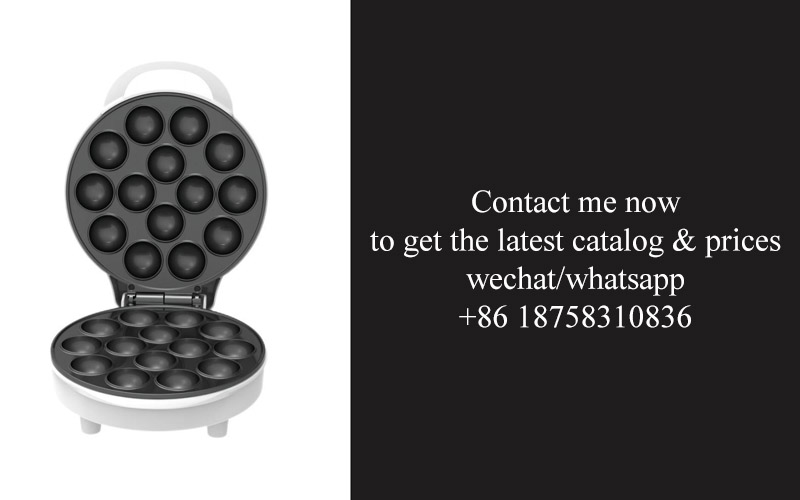
In the realm of private label kitchen appliances, packaging has evolved far beyond its traditional role of protecting products during shipping. Today, it serves as a pivotal tool for brand differentiation, consumer engagement, and overall product appeal. Here are some of the latest innovations reshaping the packaging landscape for private label kitchen appliances:
Interactive PackagingInteractive packaging is becoming increasingly popular, offering consumers a more engaging and informative shopping experience. QR codes, augmented reality (AR) features, and digital content integration are just a few ways brands are making packaging come alive. For instance, a private label blender package might include an AR feature that demonstrates how to make a smoothie, thus providing immediate value to the consumer.
Eco-Friendly MaterialsWith growing environmental concerns, the use of eco-friendly materials in packaging has surged. Private label brands are now opting for biodegradable, compostable, and recycled materials to reduce their carbon footprint. This shift not only appeals to environmentally conscious consumers but also positions the brand as a responsible corporate citizen.
Smart Packaging TechnologiesSmart packaging technologies are on the rise, using sensors and RFID tags to provide real-time information about the product’s condition. For kitchen appliances, this could mean monitoring temperature, humidity, or even usage patterns. Such innovations not only ensure product quality but also offer consumers peace of mind and the ability to troubleshoot issues remotely.
Minimalist and Aesthetic DesignsMinimalist packaging designs have gained traction, focusing on clean lines and simple visuals. This approach not only makes the product more visually appealing but also communicates a sense of simplicity and modernity. For private label kitchen appliances, a sleek, minimalist package can elevate the perception of the product, making it more competitive in the market.
Customizable PackagingCustomization is key in today’s market, and private label brands are responding by offering packaging that can be tailored to specific customer preferences or regional tastes. This could involve different color schemes, language variations, or even personalized messages. Customizable packaging not only enhances brand identity but also fosters a sense of exclusivity among consumers.
Educational and Informational PackagingPackaging that educates consumers about the product’s features and benefits is becoming more prevalent. For kitchen appliances, this might include detailed diagrams, cooking tips, or even a recipe book. By providing valuable information, packaging can help consumers make informed decisions and maximize their appliance’s potential.
Modular and Reusable PackagingModular packaging designs allow for components to be easily assembled or disassembled, reducing waste and increasing efficiency. Additionally, some brands are exploring reusable packaging options, such as durable tote bags or containers that can be repurposed after the product is used. This approach not only reduces environmental impact but also encourages repeat purchases and brand loyalty.
Enhanced Brand StorytellingPackaging is now a canvas for brand storytelling, allowing private label brands to convey their values and mission. Through thoughtfully designed graphics, typography, and packaging copy, brands can create an emotional connection with consumers, making the product more memorable and desirable.
Social Responsibility and Sustainability StatementsConsumers are more likely to support brands that demonstrate a commitment to social responsibility and sustainability. Packaging that prominently features these values can help private label brands differentiate themselves and attract consumers who align with these principles.
Technological IntegrationThe integration of technology into packaging is not limited to interactive features. Smart packaging can also include digital watermarking or anti-counterfeiting measures to ensure product authenticity. This not only protects the brand but also builds trust with the consumer.
By embracing these innovations, private label kitchen appliance brands can create packaging that not only protects their products but also enhances the consumer experience, fosters brand loyalty, and stands out in a competitive marketplace.
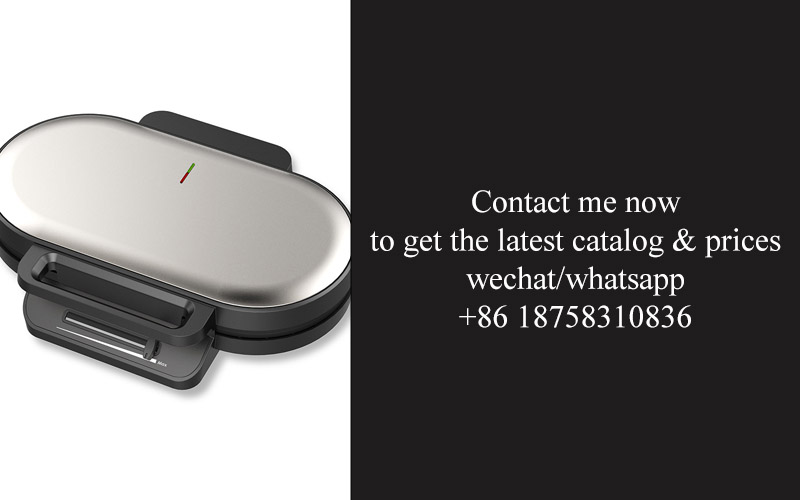
The market landscape for kitchen appliances is continually evolving, shaped by consumer preferences that reflect both practicality and desire for innovation. Here’s a closer look at some of the notable trends and preferences influencing the industry:
In recent years, there’s been a significant shift towards sustainability. Consumers are increasingly aware of the environmental impact of their purchases, leading to a preference for appliances that are energy-efficient and made with sustainable materials. This trend is driving the development of eco-friendly packaging solutions that not only reduce waste but also communicate a brand’s commitment to the planet.
Health and wellness are at the forefront of consumer minds, particularly in the kitchen. There’s a growing demand for appliances that can help prepare meals that are not only nutritious but also easy to make. Packaging that highlights the health benefits of the appliance or the recipes it can produce is becoming more popular, as are transparent materials that allow consumers to see the product inside without the need for additional packaging.
Customization is another key trend, with consumers seeking products that cater to their specific needs and tastes. This has led to a surge in smart kitchen appliances that can be programmed and controlled through apps, as well as packaging that offers a variety of configurations or upgrade options. Brands that can offer tailored solutions will likely resonate more with consumers looking for a personalized experience.
The convenience factor cannot be overstated. Time-poor consumers are looking for appliances that simplify their lives, from smart ovens that can be controlled remotely to dishwashers that can handle a variety of load sizes. Packaging that showcases the convenience features and time-saving capabilities of an appliance is more likely to catch the eye of busy shoppers.
Online shopping has become a staple for many consumers, and the way appliances are packaged has had to adapt. Packaging that is easy to handle, store, and transport is essential. Additionally, the rise of e-commerce has led to a demand for packaging that is not only functional but also visually appealing to stand out in a digital shopping cart.
Smart packaging technologies are also gaining traction. From QR codes that provide instant access to recipes and maintenance tips to augmented reality (AR) experiences that allow consumers to visualize the appliance in their own kitchen, these innovations are enhancing the shopping experience and providing valuable information at the point of sale.
There’s a growing preference for simplicity and minimalism in packaging design. Consumers are tired of clutter and are drawn to clean, uncluttered packaging that gets straight to the point. This trend is reflected in the use of minimalist fonts, neutral color palettes, and straightforward messaging.
Brands that prioritize safety and security in their packaging are also gaining favor. As concerns about food safety and appliance durability increase, packaging that offers a clear indication of the appliance’s protective features and quality assurance is more likely to instill confidence in the consumer.
Lastly, the trend towards global cuisine has influenced the appliance market. Packaging that highlights international cooking capabilities, such as multi-functional cooktops or induction ranges, is becoming more popular as consumers embrace diverse culinary traditions.
These trends and preferences underscore the importance of understanding the consumer and adapting packaging strategies to meet their evolving needs. As the market continues to change, brands that stay ahead of these shifts will be well-positioned to capture consumer interest and loyalty.
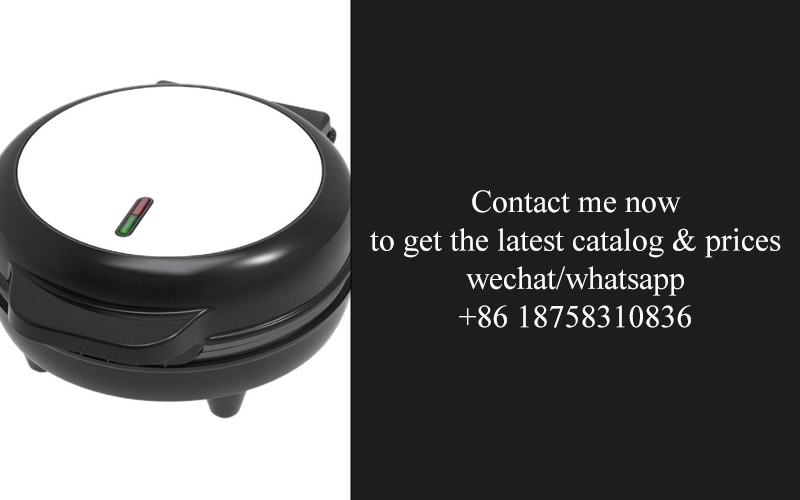
In the world of private label kitchen appliances, several brands have turned heads with their innovative approaches and successful strategies. Here are some standout examples of how these brands have navigated the market, capturing consumer attention and building strong brands in the process.
A brand that has truly made a mark in the private label space is “EcoGadgets.” Their success lies in their commitment to sustainability and eco-friendly packaging. By using recycled materials and minimalistic designs, EcoGadgets has resonated with environmentally conscious consumers who appreciate the brand’s values.
EcoGadgets’ packaging not only communicates their green mission but also stands out on store shelves. Their sleek, unassuming boxes are a far cry from the excessive branding that often accompanies name brands. This subtlety speaks volumes about the brand’s confidence in its products and its understanding of its target demographic.
Another remarkable story is that of “SimpleChef,” a private label brand that has embraced the trend towards health and wellness. By packaging their appliances with clear, informative labels detailing ingredients and health benefits, SimpleChef has appealed to a growing market of health-conscious consumers.
The packaging for SimpleChef’s products features vibrant colors and bold fonts, making the health claims pop out. This visual approach reinforces the brand’s message and encourages customers to make more informed purchasing decisions. The result? A loyal customer base that values both functionality and health.
One brand that has harnessed the power of customization is “SmartTouch.” Recognizing that consumers seek personalized experiences, SmartTouch offers a range of kitchen appliances that can be tailored to individual preferences. Their packaging reflects this by featuring a modular design that allows customers to mix and match their appliance colors.
SmartTouch’s packaging is innovative in its approach, with a clear, intuitive layout that makes it easy for customers to understand the customization options. This attention to detail has not gone unnoticed, and the brand has seen a surge in sales as customers appreciate the ability to create their perfect kitchen appliance set.
The rise of online shopping has also played a significant role in shaping the success of private label kitchen appliance brands. “KitchenGuru” is one such brand that has leveraged the digital landscape to connect with consumers. Their packaging is designed to be easily recognizable and appealing on screen, with high-quality images and detailed descriptions that highlight the unique features of their products.
KitchenGuru’s success can be attributed to their seamless online experience, which includes an easy-to-navigate website and a robust search engine optimization strategy. Their packaging design supports this digital presence, ensuring that the brand remains top of mind for customers seeking kitchen appliances online.
One brand that has successfully navigated the competitive landscape is “QuickCook.” By focusing on cost-effectiveness and simplicity, QuickCook has positioned itself as an affordable alternative to name brands. Their packaging reflects this value proposition with a straightforward design and clear messaging.
QuickCook’s strategy of highlighting the affordability of their products has resonated with budget-conscious consumers. Their packaging is minimalist yet functional, ensuring that customers can easily see the price point and understand the value they’re getting.
In the realm of private label kitchen appliances, innovation and strategic packaging have become key differentiators. The brands mentioned here have each found unique ways to stand out in a crowded market, from emphasizing sustainability to offering customization options. Their success stories serve as inspiration for other private label brands looking to make their mark and capture consumer interest.
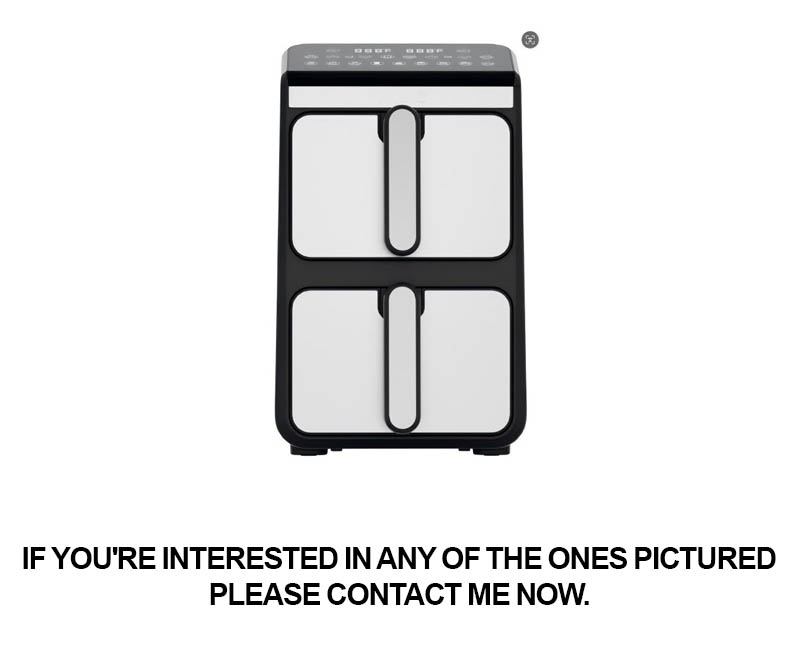
Navigating the competitive landscape of private label kitchen appliance packaging is a delicate balance between innovation and cost-effectiveness. Brands often find themselves at the crossroads of meeting consumer demands while staying within budget constraints.
The push for sustainability has become a significant challenge for private label packaging. Consumers are increasingly conscious of environmental impact, and packaging that is not eco-friendly can tarnish a brand’s image. Finding sustainable materials that don’t compromise on quality or shelf life is a hurdle many face.
One notable challenge is the need for cost-efficient production without skimping on aesthetics. Private label brands often compete on price, and packaging that looks high-end can significantly increase costs. Striking the right balance between luxury appearance and affordability is a tricky task.
Innovation in packaging design often hinges on the ability to incorporate new technologies. For instance, incorporating smart packaging solutions that offer real-time information or interactive features can be both exciting and challenging. The challenge lies in integrating these technologies without overcomplicating the packaging process or driving up costs.
Brands are also grappling with the demand for customization and personalization. Consumers are looking for packaging that reflects their individual tastes and preferences. This requires private label brands to invest in more flexible packaging solutions that can cater to a wide range of design requests.
The rise of e-commerce has brought about new opportunities in packaging design. With online shopping, packaging must now serve not only as a shelf presence but also as a protective barrier for transit. This has led to innovations like bubble wrap alternatives and cushioning materials that are more environmentally friendly yet still effective.
One of the most significant opportunities in private label kitchen appliance packaging is the integration of augmented reality (AR). AR packaging can provide customers with a virtual demonstration of how the appliance works, enhancing the shopping experience. However, the challenge is to implement this technology in a way that is accessible and user-friendly.
Another opportunity lies in the use of biodegradable and compostable materials. As the demand for sustainable products grows, brands that can offer packaging that aligns with these values have a competitive edge. The challenge here is to ensure that these materials maintain the same level of durability and functionality as traditional packaging.
The challenge of maintaining brand consistency across different markets is also a critical factor in packaging design. Private label brands must consider cultural differences and regulatory requirements, which can vary greatly from one region to another. Adapting packaging to fit these diverse needs without diluting the brand identity is a complex task.
Lastly, the opportunity to leverage data analytics in packaging design cannot be overstated. By analyzing consumer behavior and preferences, brands can tailor their packaging to resonate with their target audience more effectively. The challenge is to gather and interpret this data without infringing on privacy concerns.
In summary, the challenges and opportunities in private label kitchen appliance packaging are multifaceted. It’s about embracing sustainable practices, staying within budget, innovating without overcomplicating, and meeting the diverse needs of consumers in an ever-evolving market. For private label brands, these factors are not just considerations but critical components of their packaging strategy.

In a world where consumer preferences are constantly evolving, the future of private label kitchen appliance packaging is shaping up to be both innovative and sustainable. From smart technologies to eco-friendly materials, here’s a glimpse into the potential directions this sector might take.
The Integration of Smart TechnologyImagine packaging that not only protects your kitchen appliance but also offers a wealth of information. Smart packaging could include QR codes or augmented reality (AR) features that provide users with maintenance tips, usage instructions, or even recipes that complement the appliance. This integration not only enhances the customer experience but also fosters brand loyalty.
Eco-Friendly MaterialsSustainability is no longer just a buzzword; it’s a core value for many consumers. The future of private label kitchen appliance packaging will likely see a shift towards using more eco-friendly materials. Biodegradable plastics, recycled cardboard, and plant-based inks are just a few examples of the materials that could become standard in the industry, reducing the environmental footprint.
Personalization at ScaleWhile custom packaging may seem like a luxury, the future could bring personalized packaging to the masses. Through advanced printing technologies, private label brands can offer packaging that reflects individual tastes or specific product features. This could range from custom color schemes to packaging that highlights the appliance’s unique selling points.
Interactive PackagingInteractive packaging is not just a novelty; it’s a tool for engagement. In the future, we might see packaging that can be scanned to unlock additional content, such as cooking tutorials or appliance maintenance schedules. This could also include feedback systems that allow customers to rate their experience directly on the packaging, providing real-time insights for manufacturers.
Sustainability ReportingConsumers are increasingly interested in the sustainability practices of the brands they support. The future of private label packaging could include transparent reporting on the environmental impact of the materials used, the manufacturing process, and the packaging’s end-of-life options. This kind of transparency can build trust and differentiate brands in a crowded market.
Adaptability to Changing TrendsThe kitchen appliance market is dynamic, with trends like the rise of smart homes and health-conscious cooking. Packaging must be adaptable to these changes, offering flexibility in design and content. For instance, packaging could be easily modified to accommodate new features or to address emerging consumer concerns, such as the use of non-toxic materials.
Cultural and Global ConsiderationsAs private label brands expand into international markets, packaging must cater to diverse cultural preferences and regulations. The future will likely see packaging that is not only visually appealing but also culturally relevant, with considerations for language, symbols, and design elements that resonate with local consumers.
Collaboration with RetailersPrivate label brands are increasingly working closely with retailers to understand their needs and those of their customers. The future of packaging could involve a more collaborative approach, with retailers providing insights that inform packaging design, ensuring it aligns with the overall shopping experience.
The Use of Augmented RealityAugmented reality (AR) could become a staple in the future of kitchen appliance packaging. By overlaying digital information onto the packaging itself, consumers could visualize how the appliance would look and function in their own kitchen. This could be particularly useful for large or unusual appliances that are hard to imagine in a space.
In conclusion, the future of private label kitchen appliance packaging is poised to be a blend of technological advancements, environmental consciousness, and personalized experiences. As the industry evolves, it will need to remain agile, responsive to consumer demands, and forward-thinking in its approach to sustainability and innovation.